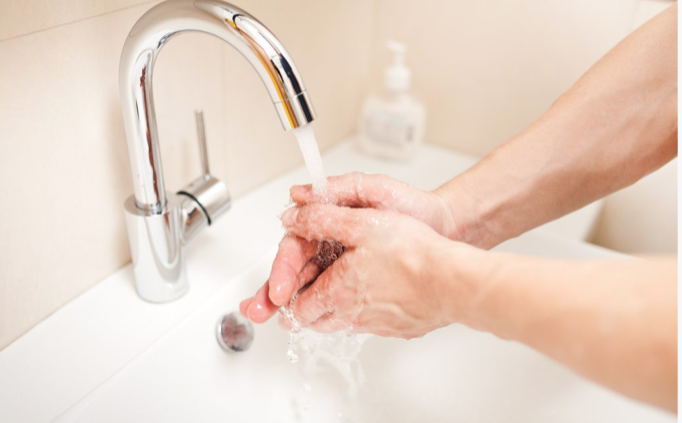What does the degree of water hardness say?
That water is “hard” can be is a known fact. Calcium and magnesium come naturally into our drinking water and form the often unpopular lime there. But not all water is equally calcareous. The degree of hardness varies from region to region, sometimes even from house to house – for example, if you have a house well and your neighbor gets his drinking water from the community. Anyone who knows his degree of hardness benefits. This is the only way to identify the need for action and save costs on detergents and household appliances.
Testing water hardness – How to determine your water hardness
Various online tests offer an initial guide to the hardness of the water in your region. However, the data are partly based on projections. If you’d like to check the numbers for yourself, just call your water company or do a quick test using test strips. Only a comprehensive water test provides exact results. This is also especially recommended if you have a domestic well. This not only provides you with information on the water hardness level, but also on many other quality criteria.
What does “German hardship” mean?
The hardness of the water is usually given in ° dH. That stands for “degree of German hardship”. To this day, the German hardness is the common unit for measuring the degree of water hardness in Central Europe. One degree of German hardness corresponds to 10 milligrams of lime per liter of water. For example, if your evaluation is 10 ° dH, there are 0.1 grams of lime dissolved in one liter. That’s roughly the weight of four to five grains of rice. Internationally, the degree of hardness is usually measured in millimoles per liter or in parts per million.
Hard or soft? Subdivision of the water hardness levels
When water is considered to be soft and when to be hard is even anchored in a law in Austria, the detergent law of 1984. In Germany, the detergent and cleaning agent law also stipulates the degree of hardness.
Establishing a chemical scale in the detergent law might seem a bit banal at first glance. The degree of water hardness has a very direct effect on washing. Because hard water requires more detergents than soft water. Perhaps you have already noticed a difference in hand washing in another region. You have to rinse off the same amount of soap with soft water for a longer time until your hands no longer feel “slippery”.
In some scales, the area above 21 degrees German hardness is also referred to as very hard. Few municipalities in Austria have such hard water. In Tulln or Wiener Neustadt, for example, the hardness of up to 25 degrees German hardness is specified by the water supplier. At the other end of the spectrum, by the way, there is rainwater that has a hardness of almost zero in Germany.
Your plants like this particularly soft water, but you should not pump it into your water pipes. Soft water has a low pH value and is therefore acidic. This can attack pipes and in the worst case even trigger heavy metals that get into your tap water. That is why in the grocery book the Ministry of Health required a minimum hardness of 8.4 degrees of German hardness. Softer water is deacidified before it is distributed via the pipe network so that it cannot cause any damage to domestic installations.
Which degree of water hardness is good?
Both hard and soft water have their advantages and disadvantages. Which degree of water hardness is good for you depends on various factors. Soft water is gentler on the skin and on household appliances, but if it is too soft it can damage pipes and pipes. You should therefore never set water softeners below the required minimum hardness of 8.4 ° dH. If your water hardness is at or above this value, you will likely be happy with your water.
Hard tap water tastes better than soft. The minerals it contains give the water its good taste. Apart from that, hard water has numerous disadvantages. Frequent cleaning and descaling are the order of the day when the water hardness is high, devices also break faster and cost a lot of money for repairs and maintenance. You will also need more detergent when doing laundry and cleaning. Hard water can quickly become a problem for sensitive skin or unruly hair. Many people are bothered by the “lime taste” in coffee or tea; the aromas can develop better with soft water.
Action required from 18 ° dH
Water that is too soft is treated, but not too hard. It is pumped into the pipes and distributed to households as normal. Hard water in itself is not bad, on the contrary: it contains the two important minerals calcium and magnesium in increased doses. However, a balanced diet cannot replace hard water – you can’t drink that much water. The human body does need these minerals for, though coffee machine & Co they become torture. The consequences: stubborn limescale deposits and constant cleaning. If you live in a region with hard water, you surely know these problems.
There is a need for action from 18 degrees of German hardship. The Austrian Standards Institute recommends softening devices above this value to be used (see ÖNORM m6245). This applies to around 20 percent of Austrian households. There are different ways of softening. Depending on what you want to achieve with the softening, a water softener make sense even with less hard water.



